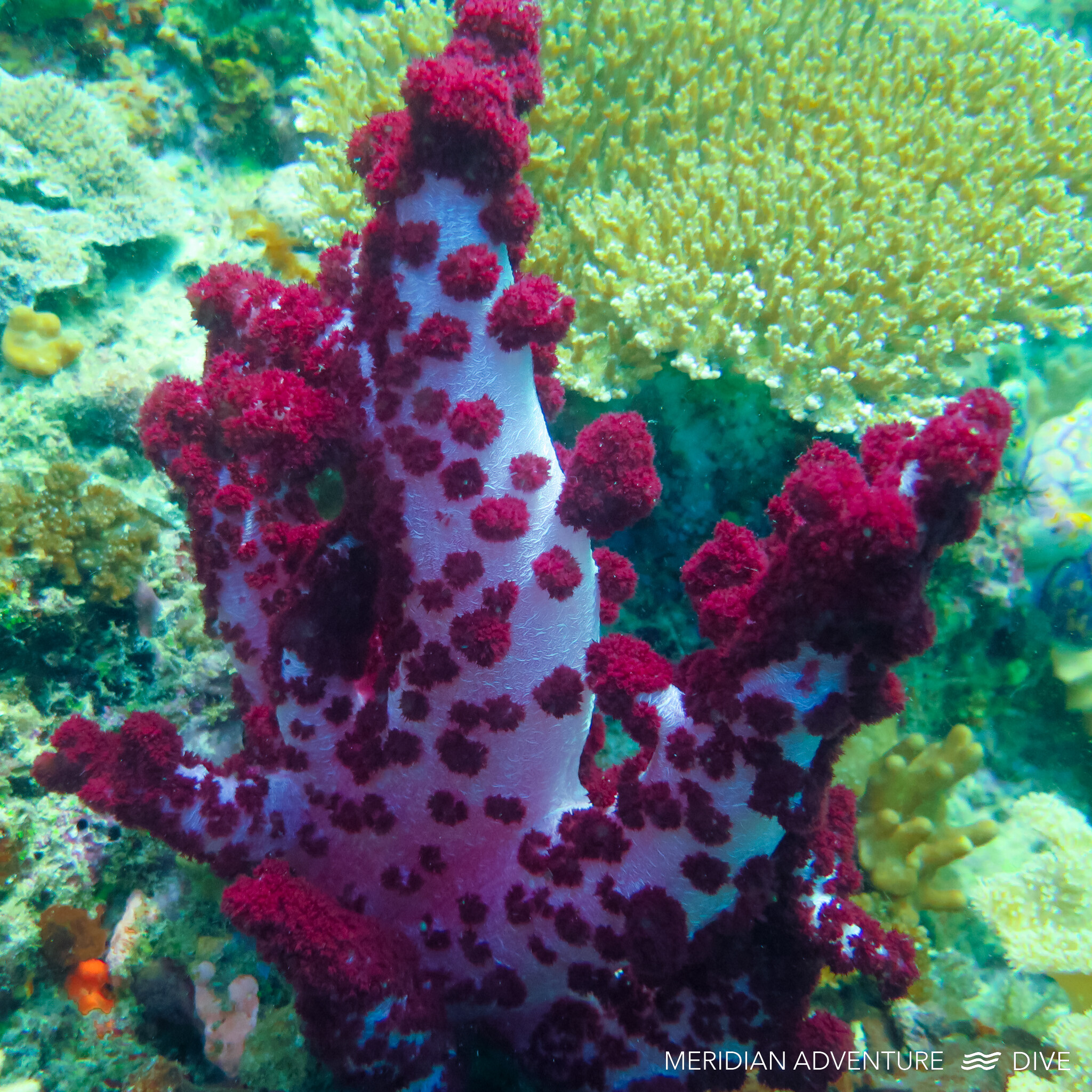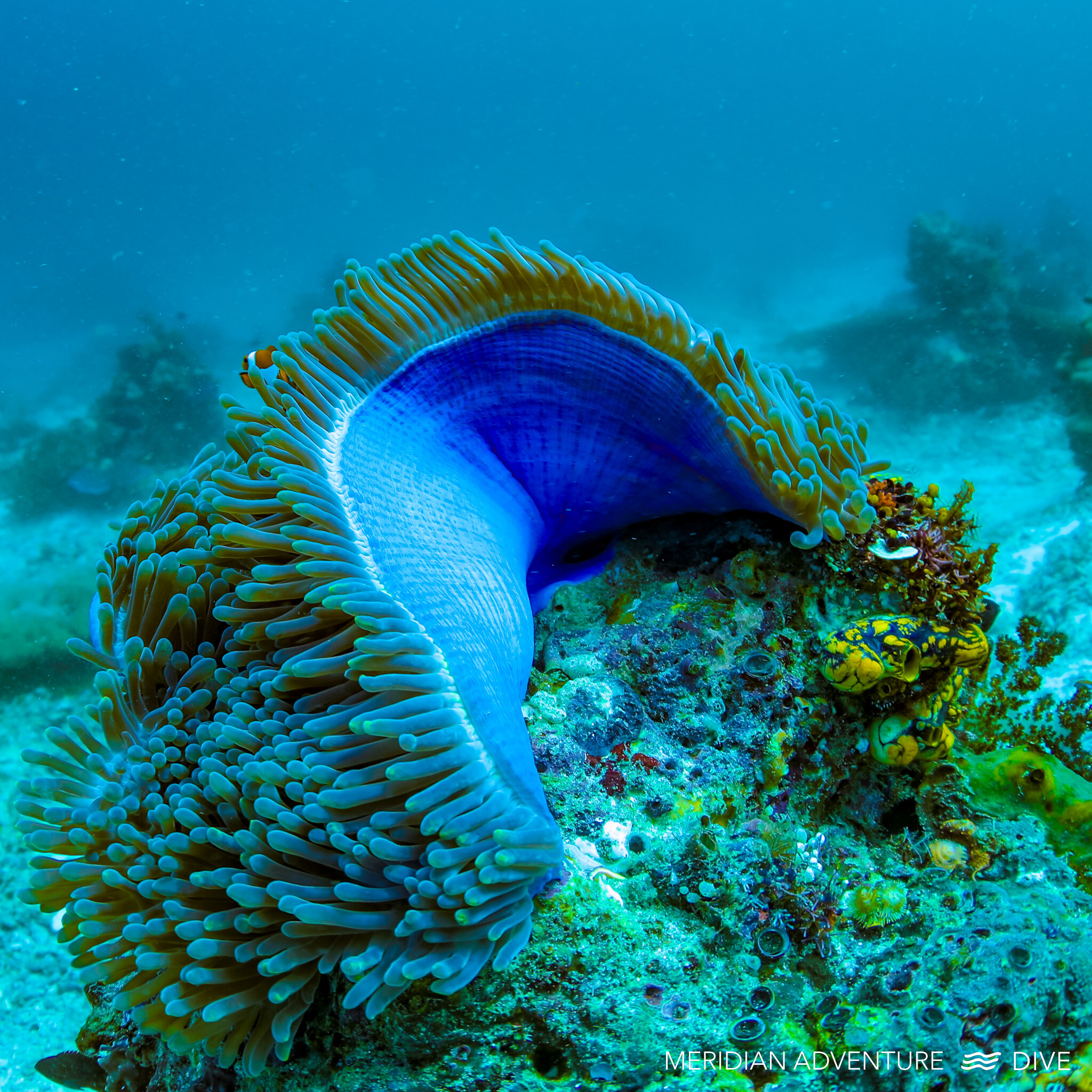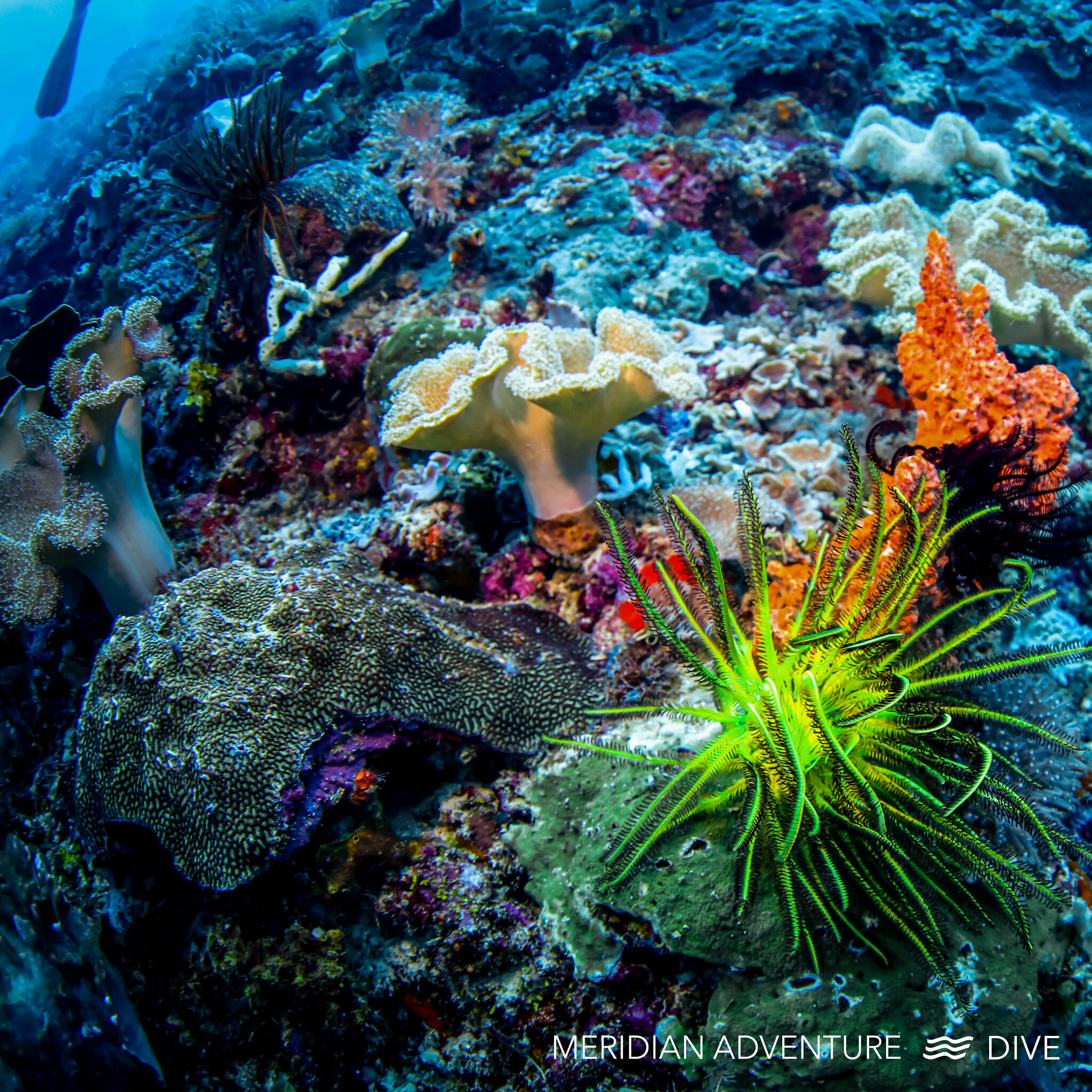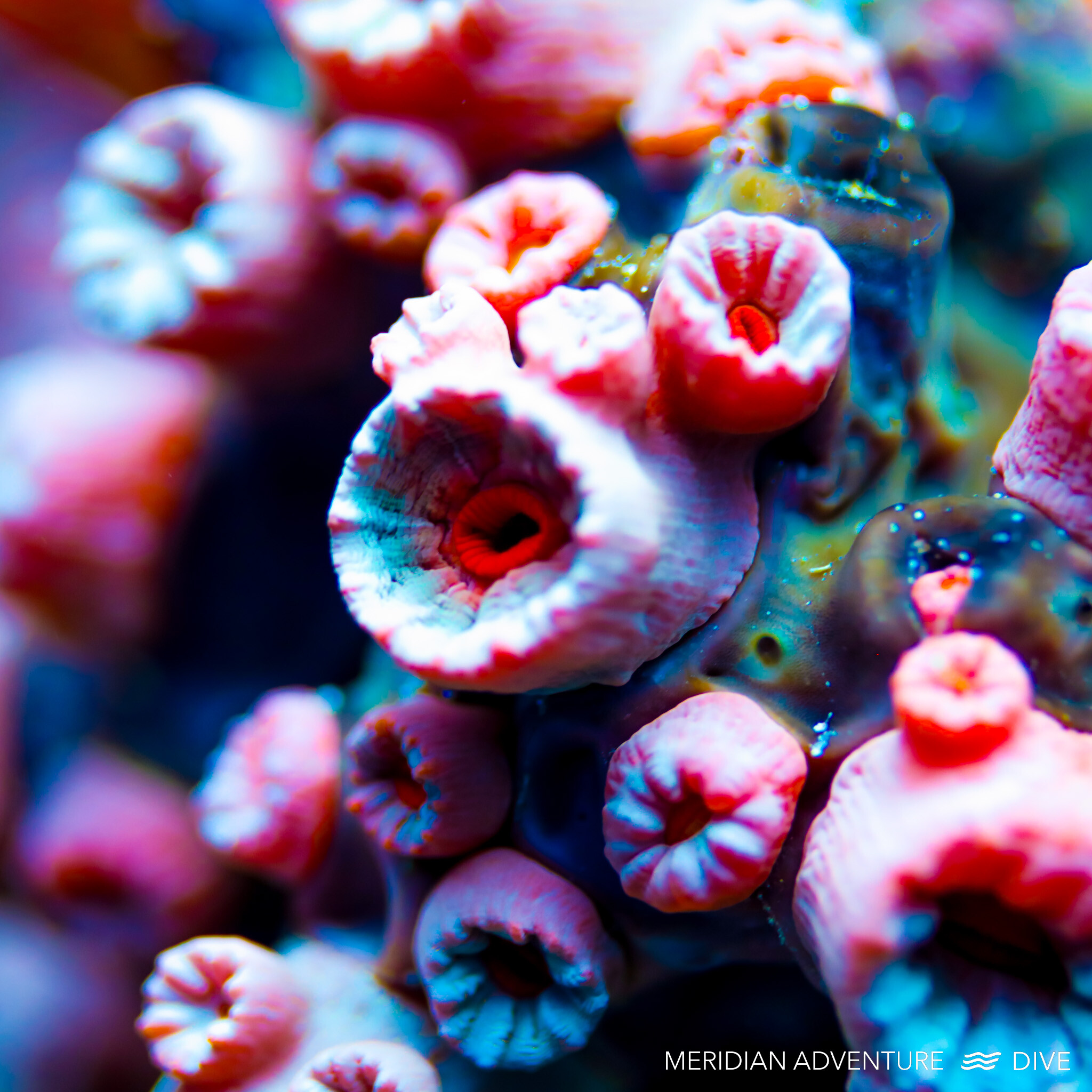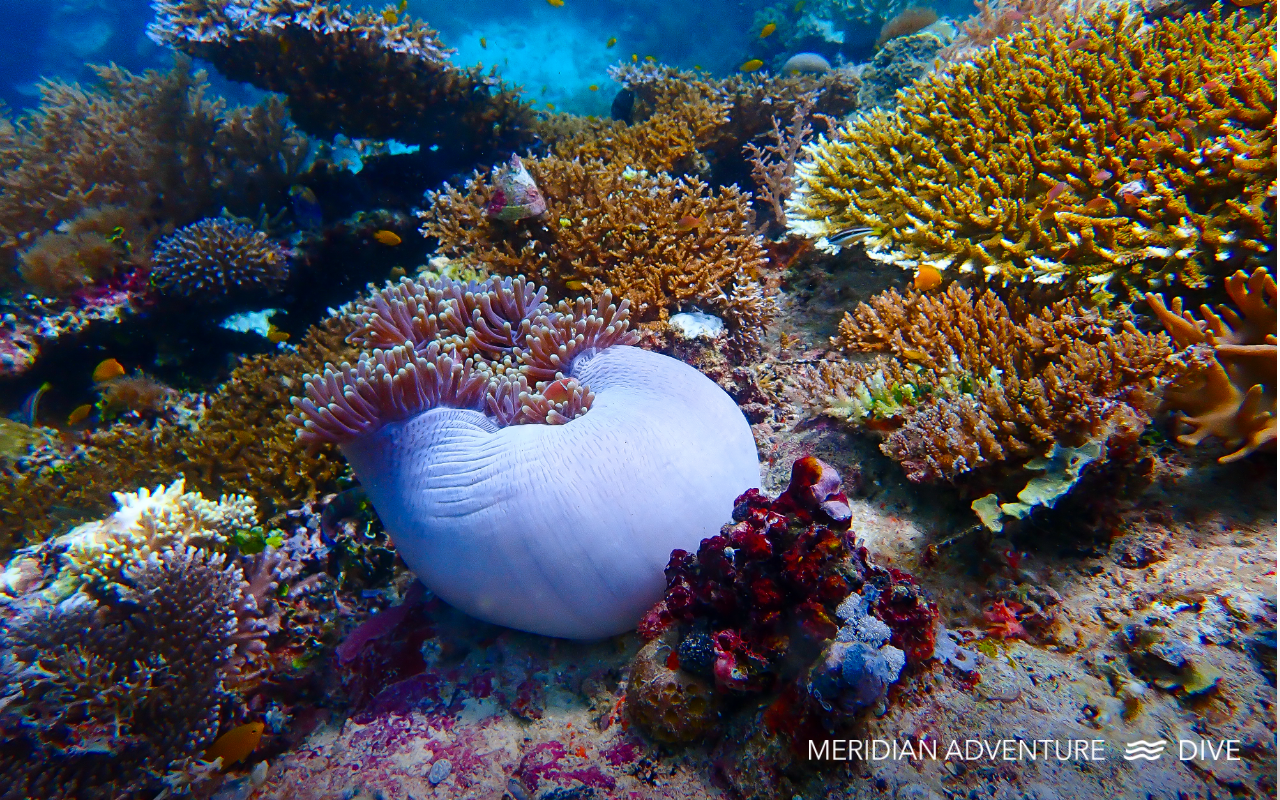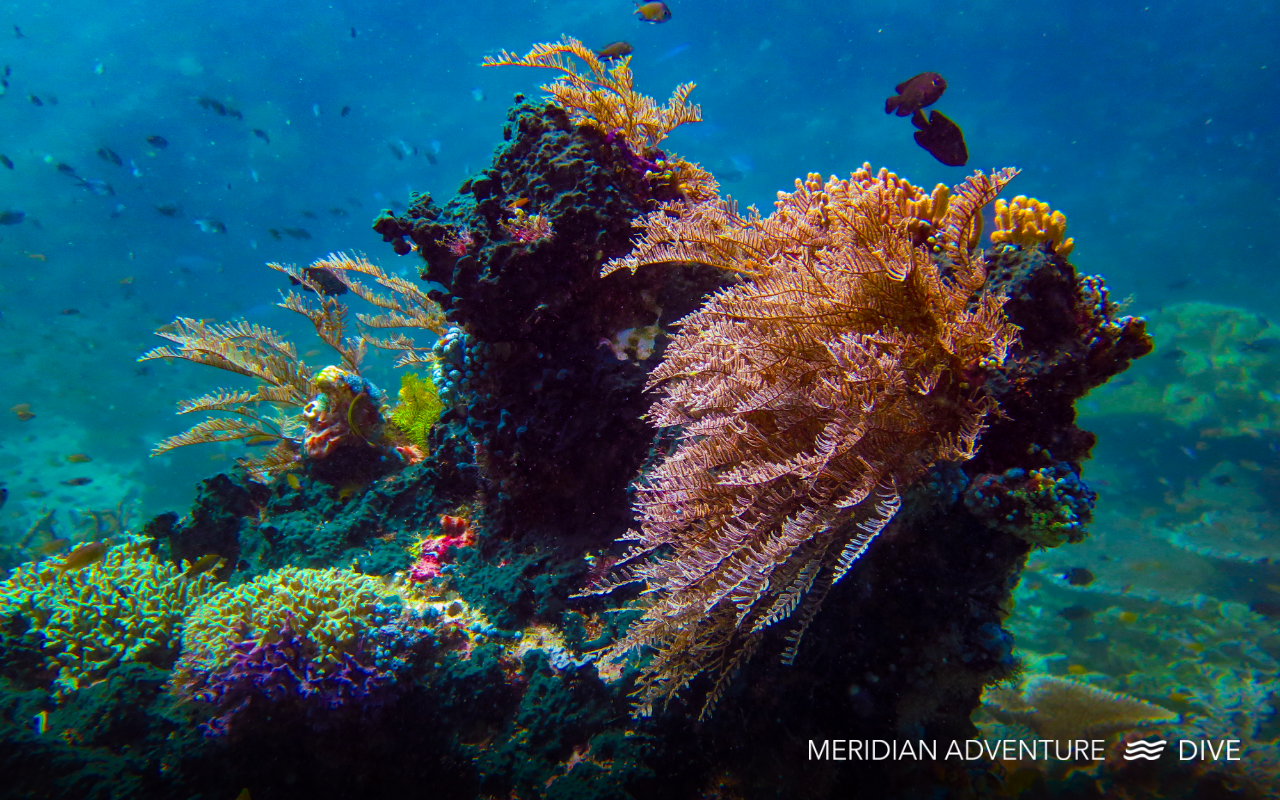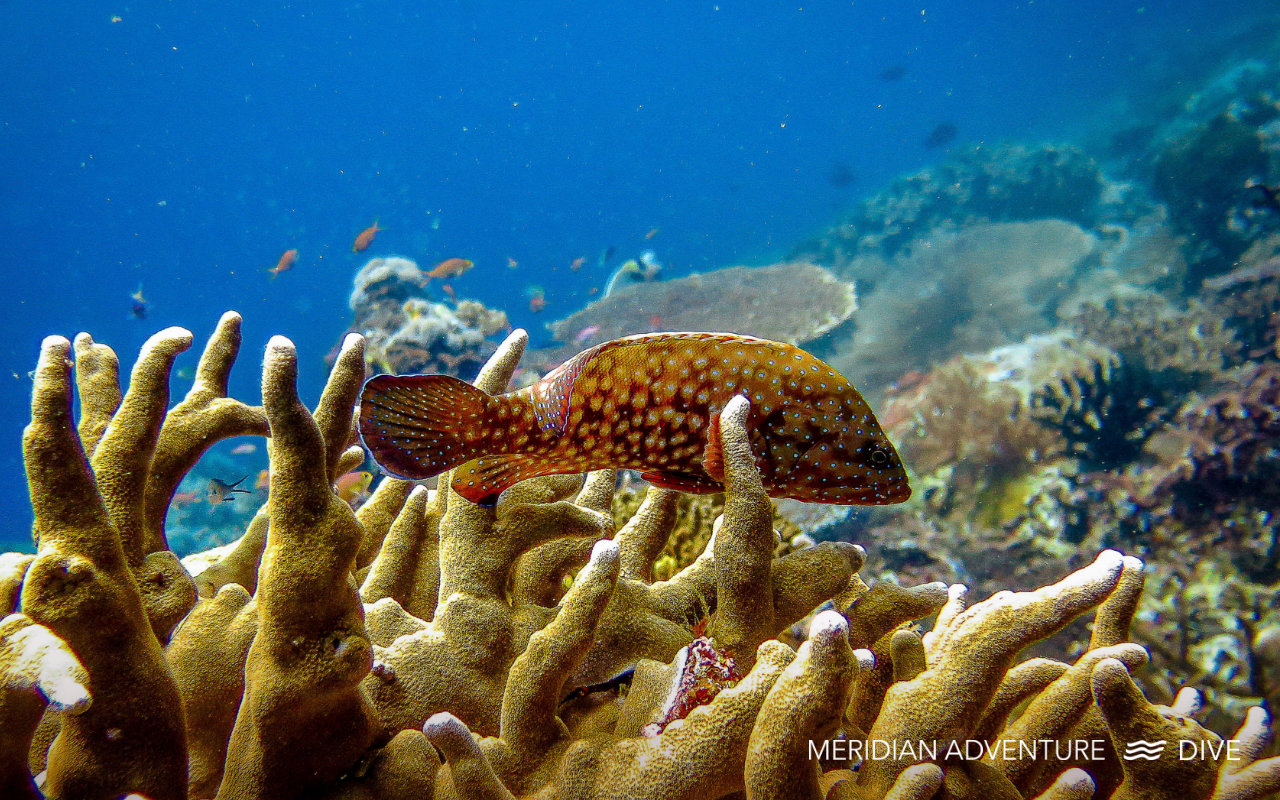Overview of Coral Reefs
Did you know that around 75% of the world’s coral species are in Raja Ampat? Moreover, Raja Ampat’s waters are remote, protected, and biologically productive, making it one of the most spectacular places to encounter lush coral reefs rich with marine life.
Coral reefs are diverse and complex marine ecosystems home to various corals, fish, and other aquatic organisms. Here’s a guide to different types of corals and some of the fish that inhabit coral reefs.

Hard Corals
Brain Coral (Family Faviidae): Named for their convoluted, brain-like appearance, these corals shelter many reef creatures.
Staghorn Coral (Acropora cervicornis): Characterized by their branching structures, these corals are essential for fish and invertebrates.
Soft Corals (Alcyonacea)
Sea Fans: These soft corals resemble leafy fans and sway with the current. They provide shelter for various tiny organisms.
Leather Corals (Sarcophyton spp.): These corals have a leathery texture and are often brightly coloured.
Fire Corals (Millepora spp.)
Not true corals, but hydrozoans. They are known for their painful stings and branch-like structures.
Black Corals (Antipatharia)
These corals are dark-coloured and form long, flexible branches. They provide a habitat for various creatures.
They are often called the “rainforests of the sea” due to their incredible biodiversity and importance to marine life.
Here’s an overview of coral reefs:
Formation:
Coral reefs are primarily formed by the accumulation of calcium carbonate exoskeletons secreted by tiny colonial organisms called coral polyps. These polyps belong to the class Anthozoa within the phylum Cnidaria and develop symbiotic relationships with photosynthetic algae called zooxanthellae.
Biodiversity:
Coral reefs are incredibly diverse ecosystems, hosting a vast array of marine species. They are home to various corals, fish, invertebrates, and other organisms. They support an estimated 25% of all marine species despite covering less than 0.1% of the ocean’s surface.
Importance:
Reefs provide a habitat for many commercially valuable fish species. They attract millions of tourists each year, contributing to local economies. Coral reefs act as natural barriers, reducing the impact of storms and erosion on coastlines. They are a source of new medicines and hold genetic diversity critical for adaptation to changing environmental conditions.
Threats:
Unfortunately, coral reefs face significant threats, including rising sea temperatures, which cause coral bleaching, a stress response that can lead to coral death. Increased atmospheric carbon dioxide levels result in more acidic ocean waters, hindering coral growth. Runoff from land, sewage, and industrial waste can harm coral reefs. Excessive fishing can disrupt the delicate balance of reef ecosystems.
Conservation:
Establishing areas where fishing and other harmful activities are restricted. Implementing regulations to prevent overfishing. Efforts to propagate and transplant corals to damaged areas. Reducing greenhouse gas emissions to mitigate the effects of climate change on coral reefs.
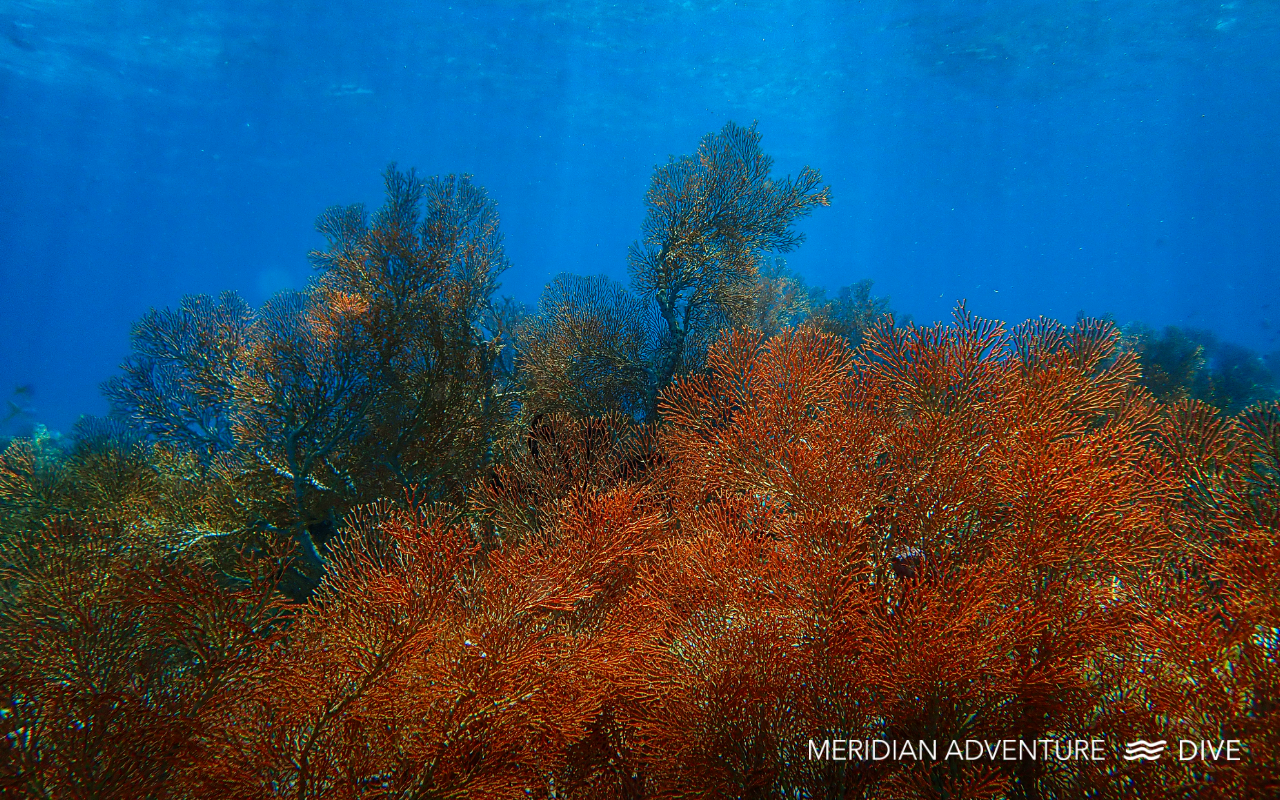
About Organization
Situated in Raja Ampat, Indonesia, Meridian Adventure Dive is a PADI 5-Star Resort and winner of the PADI Green Star award. Scuba divers enjoy our professional services that have become synonymous with PADI and Meridian Adventure names.
Visit our online platforms:
Website: Meridian Adventure Dive Raja Ampat
Facebook: Meridian Adventures Dive
Instagram: @meridian_adventure_dive
YouTube: Meridian Adventure Dive



